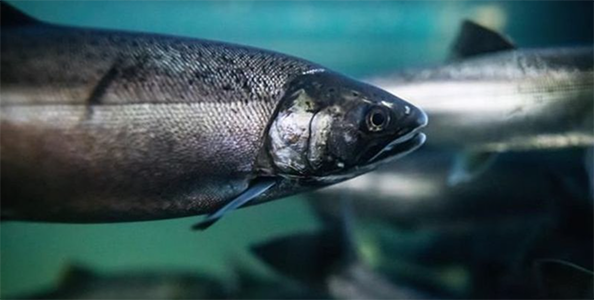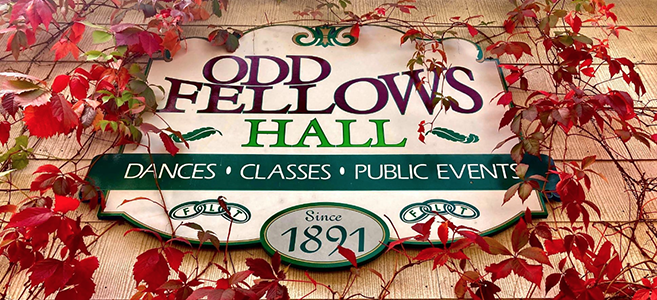||| FROM LIAM GRISKEY-WATSON |||
For some background, I read the “Letter to Editor | ‘Brave Discourse:’ An open letter to Orcas Island School District” by Paige McCormick posted on Dec. 15th and felt that the piece was reductive, confusing, and failed to make a good point to why the school district should keep critical race theory (CRT) out of the classrooms. I graduated from Orcas Island High School in 2018 and have a great appreciation for the teachers and the community. I thought it may be a good idea to throw a defense their way and add my perspective.
My feelings about this piece seem to be shared by a couple of other individuals, and I would like to shoutout to B. Sadie Bailey as they do a great job pointing out some of the absolute absurdity of this opinion piece and deciphering the interesting use of quotes (in the comments to the original piece).
Critical race theory and systemic issues can be pretty hard to understand and tend to be complex and multifaceted that can apply to many topics in education in different ways. To this end, I am sure people can point out where my gaps in understanding exist, but these concepts, especially CRT, are more critiques of current systems and history, than a weird kind of “philosophy of power” bent on destroying liberalism that McCormick seems to run with.
I think CRT is an important thing to introduce, especially in an educational setting. Giving students different perspectives on history and stepping stones to understand systemic issues are some of the most important tools we can give to navigate the modern landscape of social problems that have been plaguing this country for years.
I hate to be the one to break this to you, Paige, but critical race theory is already being used at Orcas Island High School. In Mr. Austin’s American and British literature classes, we read some novels and critical essays that touched on racism and CRT. The one example that stands out most to me was Native Son by Richard Wright. The associated critical articles for this novel related specifically to critical race theory and historical racism. In AP US History, Mr. Comito introduced us to differing perspectives for the historical events covered in the class. Then, the next year in our government and current world issue classes, he had us read parts from A People’s History of the United States by Howard Zinn. I will give all the props in the world to both these teachers as they gave me many tools to start critically thinking and asking questions of the world.
I think the ultimate irony is that Paige McCormick’s opinion piece is a great example of why we do need critical race theory at our schools. The entire last paragraph is so rooted in privilege: “Real dangers threaten all of us: illegitimate policing, the press and media, the duopoly stranglehold, other failing government, power, economic, health, and education policy. We have better opportunities to improve our country than to reinvent racism as ‘ordinary, normal, and embedded in society.’” This exact type of thinking is part of what critical race theory seeks to combat. Yes, real dangers threaten all of us but also some threaten marginalized groups disproportionately. Just because an issue doesn’t affect someone personally, doesn’t mean it isn’t valid or doesn’t exist. Racism is ordinary, normal, and embedded in our society and has been for years: Critical race theory doesn’t reinvent racism; instead, CRT exposes that racism has always existed.
I support adding more perspectives and tools for students to start thinking more critically about the world around us. If the school wants to add an equity committee and make more steps to add critical race theory to the learning environment, I fully stand behind them.









Thank you for your comments on your own education. They speak well for the Orcas School System.
I agree: school should include focus on the importance of perspectives, and especially how to analyze thoughtfully and critically.
I say this as a former high school teacher, college professor, and writer about teaching and learning.
Critical Race Theory may be a novel label. But — to take history as an example— the practice of looking beyond prevailing assumptions about what should be included as part of our nation’s story, and what left out, is well more than a century old. In that context, CRT is not novel, but perhaps presented differently this time around.
I would just like to take a moment and salute OISD for its dedication to educating our community’s children…the self and social awareness, the critical thinking, and the articulate writing demonstrated by recent graduate, Mr. Griskey-Watson, are vivid testaments to the quality of our teachers and what they offer their students.
Mr. Griskey-Watson, of course, is to be congratulated for taking full advantage of the opportunities available at Orcas High School.
Yes, Liam, it is worse than I thought. No offense, none taken.
The irony of an individual who represents the literal definition of white privilege suggesting Critical Race Theory shouldn’t be part of our students curriculum or that racism would have to be “reinvented” to be seen as “ordinary, normal, and embedded in society” would be almost comical if it didn’t so clearly illustrate the divide…
Much respect to Mr. Griskey-Watson for penning this excellent response!
Volumes and decades of postmodern scholarship define Critical Race Theory. It deserves comparative study. The OISD has just started getting serious about changing their entire system toward CRT with an equity committee. I want people to know that is taking place (I learned by accident), even though my students graduated K-12 OISD several years ago.
While I do have some concerns with CRT and Postmodernist thinking in general I think Liam is correct that OISD is doing the right thing. As he mentioned above Mr Comito and Mr Austin were both excellent teachers who ensured that their classes and course material challenged the students to think critically and did not simply reinforce their previous conceptions of what is true and right. I think that OISD is doing the right thing introducing the students to ideas and problems that are prevalent in the social and political environment today. Whether you agree or disagree with the ideas of CRT I think that you should support introducing complex ideas to students and encouraging them to breakdown, critique, improve or dismantle ideas, because it is important in building active citizens of a free society.
I attended a Catholic high school that used texts that were both limited in coverage and out of date, sheltering us from any possible controversy or independent thinking. I arrived at university and was bowled over by the difference in academe. It was not only fascinating to learn of other perspectives; it was infuriating to realize that we had been “protected” from much of the real world even in high school. I was pleased when my son brought Howard Zinn’s People’s History home in the early 80s. I think using it as a touch point serves to demonstrate the broad array of approaches that fall with critical theory’s umbrella. In my opinion, some CRT proponents are concerning in their efforts to outdo each other in critical “wokeness,” but if OISD is teaching anywhere in the vicinity of Zinn, there is little reason to worry. Traditional texts are out of the question, given the fact that publishers write to the lowest common denominator ( https://www.nybooks.com/articles/ 2012/06/21/how-texas-inflicts-bad-textbooks-on-us/). Kids today are lucky in some respects in that they have access to the internet and their teachers can gather and shape their own curricula to allow students to learn how to learn.
I did not read much of the original article because I found it somewhat disjointed, but the quote that Mr. Griskey-Watson rightly highlighted, “We have better opportunities to improve our country than to reinvent racism as ‘ordinary, normal, and embedded in society’ ”, is ironically the best evidence of the need for something different in education, CRT or not, because anyone who believes that racism is not ordinary, normal, and embedded in our society is living in another world. One thing that 2020 did well was capture on video compelling evidence to prove it.
I am glad to see that this editorial is getting so much attention and feedback. Becoming aware of and beginning to dismantle systemic racism is like peeling an onion, layer by layer – systemic racism is everywhere, not just in our history, the truth of which was denied to most of us. It’s in our everyday language and speech. Right now, a dictionary and an updated encyclopedia are essential tools to begin to see how hidden and ubiquitous it is. in forming our thoughts, in forming divisiveness and continuing racism.
Our youth can handle complex ideas! I commend the school and the equity group for moving toward CRT-based education. From the vantage point of being fully informed of our true history right up to the present, and learning Critical Thinking, our students are armed with the tools they need to build a more Just world. We need to support them in that, and the school in giving this to them.
Who were your favorite teachers? Mine were the ones who opened our eyes with truth and gave us the knowledge and tools to critically think. Some kids may only get these skills and our true history at school.
Thank you, Liam, for inviting thoughtful discourse and sharing your experience with school and the difference good teachers have made in your life. I hope your editorial inspires more support for CRT – based education. I hope readers will learn what CRT is, and isn’t. It’s not what its most vocal detractor says it is.
I taught at the high school for almost 20 years and am sorry I missed you Liam; I did have your older brother, however. I am in the dark about this CRT “controversy”. I simply taught what I thought was morally and ethically proper, having grown up in the sixties and seventies, I had been immersed in the Civil Rights Movement and made sure my students knew certain truths about the founding and continuing of our country, built literally on the backs of slave and very low paid labor. I would be interested in serving on this committee at OISD or at the least knowing what it is they are proposing, if anything.
Kathy, the committee is currently open only to current district employees. (except the steering committee). MLK civil rights movement is denigrated by CRT. If OISD might consider a hybrid of CRT upon applying the theory, future radial evolution is designated “viral” by today’s theorists.
Everything I put have put in quotes comes from the academy, but I am not here to present a formal defense. Anyone may contact me with ethical purpose.